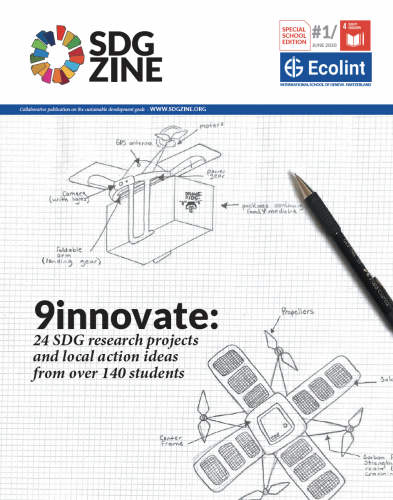
The Future is calling
Over 140 Students of year 9 at the International School of Geneva (Ecolint) were given 24 issues directly related to the 17 Sustainable Development Goals of the United Nations. These 13/14-year old’s have been challenged to work together and come up with ideas.
This Ecolint project as started by Sarah Lalaz and developed further in conjunction with Nicky Curtin, Jan Djikstra, Sonia Eastham and Daniel Auger, creates an enriching experience, adding new skills to their student’s regular educational program; cross disciplinary groups from different classes, working with one or more unknown adult experts from the field, organization of your team, tasks... Who takes the lead? How do you distribute the work? Valuable lessons for kids that age. Well, all ages, if you ask me.
It became even more challenging, since some virus showed up and all plans needed to change drastically. All kids stuck at home - how’s that for a setting of a two-month collaborative project? An unforeseen organizational glitch, obviously. But the lockdown and the pandemic itself turned out to be a changemaker on different levels. It created a framework for new ideas to prosper. Instead of fictitious concepts, we can now balance our ideas against actual concrete issues to tackle.
Reality thus overcame fiction and the wildest ideas should not be left out; COVID 19 showed (and shows us) the actual need for paradigm shifting ideation projects; in that sense, we can safely say COVID-19 is an unintended but major aspect added to the curriculum of these youngsters.
I am proud to welcome you to this special edition of the SDGzine. The idea of the SDGzine magazine is to create a source of inspiration and leave traces of the work that has been done. In my wildest dreams the magazine does not only show best practices and be an end of a project, yet rather be a starting point and help accelerate these projects that deserve to be taken on by others.
The advantage of the Sustainable Development Goals - SDGs - is that they create a clear navigation system. Only recently we produced SDGzine 01 in collaboration with the University of Geneva, and at this very moment the SDGzine 02 is in production. The one you are holding is a first Special School Edition.
As a reader, the SDGs will guide you through the 24 projects, each going from global challenges to local actions. Because, sure, we can have ideas. We can do hackathons. But my fear is always these are time consuming events that become rather team building activities than actual change makers. Hence the importance of the local action part of the kid’s missions. What concrete action can they think of? What could they do, themselves? How can we turn that global issue into something very tangible close by?
And true, the lockdown made lots of the actual actions impossible. But we cannot deny that the energy from these youngsters is exemplary. For other kids and schools, sure, but also for us, adults.
We might have forgotten about the importance of things. We might have lost a bit the hierarchy of needs of our planet and mankind. Browsing through all these ideas, and you’ll get a wake up call. We need to act. The future is calling. 144 students at a time.
Jan Van Mol
